The pomegranate tree (Punica), or as it is also called the pomegranate, is represented by not very large shrubs and trees, but this genus belongs to the Derbennikovye family, although more recently it was called the Pomegranate family. The Latin name of the genus comes from the word Punic, or Carthaginian, since this plant is widespread in the territory of modern Tunisia (for a very long time it was called Carthage). The origin of the Russian name for such a plant is associated with the Latin word "granatus", translated as "granular". In the ancient world, the pomegranate was called the "granular apple", while in the Middle Ages it was called the "seed apple". It is interesting that even today in Italy they believe that it was with a pomegranate that Eve was tempted in paradise. Today, in nature, such a plant can be found in Western Asia and Southern Europe. Gardeners and florists cultivate only 1 species of this genus, namely, common pomegranate. The fruits of such a plant are very useful and have an excellent taste, which is why pomegranate is widespread in culture, and it is grown both in the open field and indoors. However, it can be grown using a fruit bone, which scientists call pomegranate.
Content
Brief description of cultivation
- Bloom... After planting, the plant blooms only after 3 years.
- Lighting... The light should be bright, but always diffused.
- Temperature regime... During intensive growth of trees - from 18 to 25 degrees, and during dormancy - from 12 to 15 degrees.
- Watering... During the period of active growth, watering should be frequent and abundant, however, during the flowering period, watering should be reduced. In winter, it is necessary to water the bush sparsely.
- Air humidity... Experts advise to moisten the foliage with lukewarm water from a sprayer on hot days in the evening.
- Fertilizer... In the spring-summer period, feeding is carried out 1 time in 2 weeks and for this purpose a mineral complex fertilizer for domestic plants with a low nitrogen content is used. In winter, all feeding is stopped.
- Dormant period... It starts in late autumn and ends in February. When a bush needs rest, foliage begins to fly around it.
- Transfer... Young trees need regular replanting, which is carried out once a year. Bushes older than three years should be transplanted only if necessary, after the roots no longer fit into the container.
- Pruning... The bush is pruned in February to form the crown and to stimulate branching.
- Reproduction... By seed method, cuttings and grafting.
- Harmful insects... Mealybugs, spider mites, scale insects, aphids, moths and whiteflies can settle on the bush.
- Diseases... Branch cancer, root rot.
Features of the pomegranate
The pomegranate is a long-lived deciduous tree. In nature, it grows in the subtropics and has a height of about 5-6 meters. However, at home, such a tree cannot be higher than 200 cm. The branches are thin and thorny. Greenish shiny leaf plates are oval in shape, while their length is about 30 mm. Pomegranate blooms in the last spring weeks, while flowering continues throughout the summer. The flowers are orange-red in color, and they are of 2 types: there are a large number of sterile bell-shaped flowers, and there are also bisexual pitcher-shaped flowers that set the fruit. The pomegranate forms a spherical fruit, which is essentially a large berry with a leathery pericarp; it reaches about 18 centimeters across. The color of the peel is brown-red, orange-yellow, or some other intermediate shade. The fruit is divided into 6-12 nests or chambers, which are placed in 2 tiers, they contain up to 1200 seeds, sometimes more. All seeds are surrounded by a succulent cover. The first fruiting is observed at the age of three. The tree bears fruit for 7–40 years. Today, Homemade pomegranate is very popular with flower growers, for example, as: coffee tree, mango, indoor lemon, orange, date palm and other exotic plants that cannot be grown outdoors in mid-latitudes. However, before planting a pomegranate, it should be borne in mind that all the efforts and years of waiting can be in vain.
Such a tree can be grown in room conditions from a bone, but this can only be done if optimal conditions are created for it, and also if it is properly looked after.
Growing pomegranate from seed
Seed selection
Fresh pomegranate seeds, which must be taken from a ripe, beautiful and completely healthy fruit, are quite suitable as seeds. Remember that pomegranates bought on the market or in a store are hybrids; therefore, a tree grown from such a seed is not able to preserve the taste of the mother plant, but it can have a very high decorative effect. The best option would be to find a delicious and fully ripe pomegranate obtained from a houseplant. From the seeds pulled out from the fruit, all residual pulp must be removed. Seeds suitable for sowing should be creamy and very hard to the touch. Pale green as well as soft seeds should not be sown. The seeds must be kept in water for half a day, mixed with 2-3 drops of Epin or Zircon, this is necessary to stimulate germination. Make sure that the bones are not completely immersed in the solution, as they need both moisture and oxygen.
Sowing rules
To grow such a tree, you need a loose soil mixture, which includes peat, nutritious soil and sand. To do this, in a specialized store, you can buy a universal substrate for flowering plants, the fact is that such a plant is undemanding to the composition of the soil mixture. When the seeds are prepared, they need to be dried, after which they are planted in the substrate to a depth of 10 to 15 mm. The crops must be watered with a small amount of water, then the container is covered with glass or film on top and removed to a sunny place.
In order for the seedlings to appear in just half a month, sowing should be done in the last winter or first spring weeks. If sowing is done at a different time, then seedlings may appear only after a few months.
Pomegranate seedling care
For the cultivation of such a tree in indoor conditions to be successful, optimal conditions should be created for it. It feels comfortable when the air temperature in the room is about 25 degrees, the room must be systematically ventilated, and it is also necessary to moisten the soil mixture in time with lukewarm water from a sprayer. After the seedlings have the first true leaf plates, they must be planted, while the root must be shortened by 1/3. They are planted in individual small pots, which are filled with a fertile substrate, and do not forget to make a good drainage layer at the bottom. The bush should be placed on a well-lit windowsill, the fact is that the direct rays of the sun should fall on it for at least 2 hours a day. If the seedlings appeared in the winter, then they will need additional lighting. When the plants have 2 pairs of true leaf plates, they need a pinch, which is needed to stimulate the growth of the bush with two tops. After 3 pairs of leaf plates also grow on all the stems, they also need a pinch. Thanks to this, the bush will be thick and effective. The temperature in the room where the young tree grows should be about 20 degrees, while it should be systematically ventilated. In the warm season, it is recommended to transfer such a plant to the street (to the terrace or balcony), where it will feel comfortable, since it needs a lot of sunlight and fresh air.
10 months after the seedling appears, the first flowering may begin. In autumn, the pomegranate will fly around all the foliage, and a period of rest will begin. Of course, you can make it grow actively in the winter, but this will lead to a rapid depletion of the plant. In this regard, he must be given a rest. The bush must be rearranged in a cool place (from 10 to 12 degrees), watering should be reduced, and it is also stopped feeding. The tree will rest for 1–2 months. When the bush has rested, fresh foliage will grow on it, and it will be even more beautiful than before.
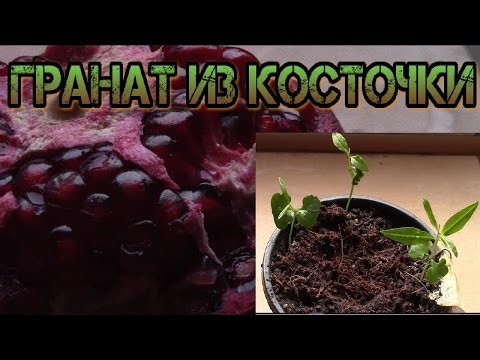

Watch this video on YouTube
Caring for pomegranate at home
How to water
Watering a young pomegranate should be done at the root, while trying to prevent drops of liquid from falling on the surface of the leaf plates. It is most convenient to water the bush with a watering can with a narrow spout. Make sure that the soil mixture in the container is always slightly damp. During the flowering period, watering should be reduced, however, the earthen lump should not dry out in any case. Water should be used well-settled (at least 24 hours), and it should be lukewarm (1-2 degrees above room temperature). Experienced flower growers advise, to compensate for the reduction in watering, moisten the foliage of the bush from a spray bottle with boiled warm water. During the dormant period, watering should be scanty.
Top dressing
To stimulate the growth of plants during the seedling period, they must be fed with a solution of wood ash (1 tsp of ash per 1 liter of water), it is used to water the bushes. Top dressing of trees is carried out in the spring-summer period 1 time in half a month and for this they use a universal liquid fertilizer for indoor plants. In the event that a tree is cultivated for the sake of obtaining fruits, then it is recommended to feed it not with mineral fertilizers containing a large amount of nitrates, but with organic matter (solution of chicken manure or slurry). When feeding, you need to be extremely careful, because if the bush receives too much nitrogen, then it will not form flowers, and therefore fruits.
Pomegranate transplant
When growing at home for a pomegranate tree, you need to choose a fairly tight container. The tighter the pot, the less bell-shaped sterile flowers will form in the bush. The first bush transplant is carried out after 1 year. Adult bushes are transplanted only if necessary, they do this when the root system becomes too cramped in the pot. During transplanting, the new pot should be only 20-30 mm larger than the old one. After the plant turns four years old, the transplants must be stopped, but at the same time, the top layer of the soil mixture should be replaced once a year.


Watch this video on YouTube
Pruning
The pomegranate can be formed as a compact tree with a low stem and 4 or 5 skeletal branches, or as a bush with 3 or 4 skeletal branches. As the bush grows on the formed skeletal branches, it is necessary to lay 4 or 5 branches of the second order, and then, if desired, branches of the third order can be formed on them. Root shoots, as well as fatty and excess stems and branches must be removed. Over time, old branches are cut out because they cannot produce crops. Fruiting of the tree is observed on the shoots of the current year.
Pomegranate pests and diseases
Such harmful insects as mealybugs, spider mites, scale insects, aphids, moths and whiteflies can settle on an indoor pomegranate. Also, the tree can be affected by branch cancer (phomopsis), root cancer, leaf spot and gray rot.
Pests
If aphids have settled on a bush, then in order to get rid of it, use a two-day infusion of tobacco (for 1 liter of hot water 40 grams). Before spraying, the ready-made infusion must be mixed with water in a ratio of 1: 2, and with 4 grams of laundry soap, which is pre-ground on a grater. To destroy spider mites, whiteflies and scale insects, onion or garlic infusion is used. To prepare it, you need to combine 1 liter of water and 20 grams of husk, after 5 days the infusion will be ready, it will only be necessary to strain it. If a moth has settled on a bush, then in order to get rid of it, it is necessary to remove all affected fruits, both those that fell and those that hang on the branches.
Chemicals can also be used to protect the tree from harmful insects. To exterminate mealybugs, the bush is sprayed three times with Mospilan, Confidor or Aktara, while the procedures are carried out with an interval of 5-6 days. And you can cope with spider mites with acaricidal drugs, for example, Fitoverm or Aktellik.
Diseases
If the bush is affected by cancer of the branches or roots, then cracking of the bark and the formation of wounds with spongy swelling are observed, while the branches and stems begin to dry. If the tree is very badly affected, then it dries up completely. As soon as the first symptoms of the disease are noticed, all wounds must be cleaned out to healthy tissue, after which they are sprayed with a solution of copper sulfate and treated with garden varnish. In the case when almost the entire surface of the tree is covered with such areas, it is recommended to cut it down on a stump, perhaps this will help save it. The most common causes of damage to pomegranate by such diseases are mechanical damage to wood or bark.
Possible problems
If you take care of the bush incorrectly or do not provide it with suitable growth conditions, then problems may arise with it:
- Yellowing of the tree... This problem is very common. To begin with, the bush must be carefully inspected for the presence of harmful insects, in particular spider mites. If there are no pests, then the bush most likely turns yellow due to the excessively high air temperature in the room. Also, yellowing can be associated with an insufficient amount of moisture in the soil mixture, but in this case, dark spots form on the leaf plates.
- Flying around foliage... The flying around of the leaf plates may be the result of their yellowing, and this may be due to the fact that pests, for example, spider mites, have settled on the bush, or the plant is affected by some disease, as well as with excessively poor watering or with the fact that in the room very hot. Flying around the foliage can also be due to the fact that the plant is preparing for a dormant period, because it is deciduous. In this case, the process is quite natural and you should not be afraid.
- Drying trees... Drying of the foliage may be due to the fact that the humidity in the room is too low or with problems with the root system, which occur when the tree is watered incorrectly. In this case, the substrate in the pot must be sniffed, if it has a pungent smell of mold, then the bush will need to be transplanted into a fresh soil mixture. During transplanting, carefully inspect the root system of the bush and cut out any rotten areas. The wounds on the surface of the root system must be covered with charcoal powder.
Reproduction methods
The home pomegranate tree is propagated by seeds, as well as by cuttings and grafting. It was already mentioned above that plants grown from seeds may not preserve the varietal characteristics of the parent plant, but the trees obtained in this way are suitable for grafting varietal cuttings. Plants obtained by cuttings or grown from cuttings completely retain the varietal characteristics of the parent bush.
Pomegranate from cuttings
When harvesting cuttings, the growth of the current year is cut off, while their length should be about 10 centimeters. You can also use root shoots for cutting cuttings. First, the lower cut of the cuttings is immersed in a solution of a product that stimulates the formation of roots, where they should stay for 6 hours. Then the cuttings are washed under running water and planted in a soil mixture, which includes sand and peat (1: 1). The lower cut of the cuttings must be buried 20-30 mm into the substrate, after which the cutting must be covered from above with a cut plastic bottle or a transparent dome to create a greenhouse effect inside, which is necessary for successful rooting. Then containers with cuttings are rearranged in a well-lit place. They should take root completely after 1.5–2.5 months, after which they are transplanted into individual pots, which are filled with a soil mixture for citrus plants or a substrate consisting of turf, humus and leafy soil, and also sand (2: 1: 2: 1). If a bush grown from a cuttings is well and properly looked after, then its first flowering may come within 2 or 3 years after planting. The pomegranate tree can also be propagated by lignified cuttings, but their roots are formed for a very long time, while most of the cuttings die.
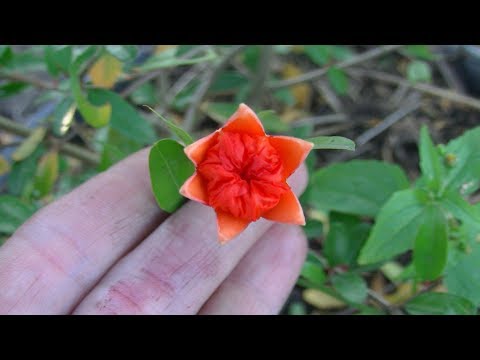

Watch this video on YouTube
Reproduction by grafting
Indoor pomegranate is also propagated by grafting. If you plant a varietal cut on a pomegranate stock that was grown from seed, then you will get a varietal plant. Varietal cuttings that are suitable for grafting can only be taken from a fruiting bush. Different methods are suitable for grafting pomegranates, it all depends on the thickness of the scion cuttings and rootstock. Today, there are more than 150 methods of vaccination, and it is up to you to decide which one is right for your particular case. The most popular among florists, as well as the most simple ones, are simple copulation, copulation with a tongue (English), behind the bark, into the cleft, into the butt and into the side cut. A successfully grafted plant should bloom for the first time after 3 or 4 years.
Types and varieties of homemade pomegranate
In nature, there are only 2 types of pomegranate, namely: common pomegranate (Punica granatum) and Socotran pomegranate (Punica protopunica), which is endemic to the Yemeni island of Socotra.The Socotran pomegranate differs from the common one in its pink color of flowers, as well as in smaller and less sweet fruits. Common pomegranate is described in detail at the beginning of this article.
The dwarf pomegranate is a hybrid, but since it is very popular with flower growers, it has been singled out as a separate species called Punica nana. This species is most often cultivated at home, including as a bonsai. The height of such a tree does not exceed 100 centimeters. This species differs from the rest in that it begins to bear fruit very early. The first flowering is observed already at 3-4 months. And in two-year-old garnets, the formation of about 10 small garnetines is observed, reaching up to 50 mm in diameter. This species grows well at home due to the fact that it is resistant to low air humidity. This species differs from ordinary pomegranate in that it practically does not throw off leaf plates for wintering. Thanks to breeders, more than 500 varieties of this species were born, most of which are cultivated at home. For instance:
- Uzbekistan... At home, the height of such a tree can reach about 200 cm. The rich red spherical fruits weigh about 120 grams. Their peel is thin, and the grains of a wine-burgundy color have a sweet-sour taste.
- Baby... The height of the bush, as a rule, does not exceed 50 centimeters. Flowers are collected in bunches of 5-7 pieces or they are single. The color of the fruits is brownish-yellow with a red blush, they reach 50–70 mm in diameter, while pomegranates ripen at the end of the first half of the winter period. Such bushes must be pollinated artificially.
- Carthage... Blooming is observed in May – August. Red flowers reach 40 mm in diameter. Slightly sour juicy pomegranates are very tasty.
- Shah-nar... The variety was born thanks to Azerbaijani breeders. The red fruits are pear-shaped or round, covered with a medium-thick skin. The taste of small grains is pleasant, sweet and sour.
- Ruby... The height of such a tree is about 0.7 meters. Unlike other varieties, this one has a more intense ruby color. If the plant is well looked after, then its pomegranates will weigh about 100 grams, and in diameter they will reach 60–80 mm.
Among gardeners, such varieties are popular as: Kzyl-anar, Vanderful, Ulfi, Lod-Juar, Ak-Don, Guleisha red and pink, Purple, Salavatsky, etc.
If you have a desire to grow pomegranates at home, then you can choose not only compact but also vigorous varieties for this. The fact is that in indoor conditions they very rarely grow more than 200 cm.


Watch this video on YouTube
Properties of pomegranate: harm and benefit
Useful properties of pomegranate
Pomegranate is one of the healthiest fruits. The fruit contains vitamins P, C, B12, B6, fiber, sodium, iodine, phosphorus, iron, potassium, manganese, calcium and magnesium. The composition of pomegranate juice includes sugars - fructose and glucose, apple, tartaric, citric, oxalic, succinic, boric and other organic acids, sulfate and chloride salts, phytoncides, tannin, tannins and nitrogenous substances.
Due to the fact that pomegranates contain all these substances that are very useful and necessary for the human body, they have medicinal properties. Such fruits help to quench thirst, strengthen the nervous system, vascular walls and immunity, as well as the formation of red blood cells in the blood and the production of hemoglobin. For a long time, the infusion of flowers and fruits of this plant was used as a hemostatic agent. For people of age who have undergone surgery, it is recommended to eat pomegranate for quick recovery. It contains a lot of vitamin K, which is needed for the normal metabolism of connective tissues and bones, and in particular for the absorption of calcium.
Such a plant helps to slow the development of osteoarthritis, while it eliminates swelling and inflammation of the cartilage tissue. Pomegranate juice, among other things, normalizes blood pressure, and it is recommended to drink it as a hematopoietic agent for diseases of the heart, kidneys, liver, circulatory organs or lungs. The composition of this juice also includes estrogens, which help to alleviate the condition with menopause, as well as fight insomnia. It is very important for vegetarians to include pomegranate in their diet, as its juice contains 15 amino acids, and almost half of them can be found mainly in meat. Due to the fact that the vegetarian will regularly eat pomegranate, he will not feel a lack of animal proteins. The juice also has a choleretic, anti-inflammatory, analgesic and diuretic effect on the body. Still, such a plant is rightfully considered an excellent remedy for scurvy, uric acid diathesis, atherosclerosis, headaches and gastrointestinal disorders. Experts recommend that the juice of such a plant be drunk regularly for people who live in a zone of increased radiation, who have undergone irradiation or who work with radioactive isotopes. It is also recommended to drink it for anemia, hypertension, malaria, bronchial asthma and diabetes mellitus. The peel of the fruit contains alkaloids, so it is used as a powerful antihelminthic agent. A decoction of the peel is used for inflammation of the kidneys, eyes, liver and joints. It is also used for bowel disorders and for gargling a sore throat. The powder prepared from the peel is slightly fried in cow or olive oil, the resulting mixture is used for burns, abrasions and cracks, and also as a mask for oily skin.
Pomegranate seeds are a powerful agent that increases intestinal peristalsis. And they also contain a very valuable oil, which contains fat-soluble vitamins E and F, which contribute to rapid wound healing, rejuvenation, protection of the human body from cancer and regeneration of skin cells. Pomegranate extract contributes to the rapid recovery of the epidermis, which has been exposed to prolonged exposure to sunlight. The dried white films inside the pomegranate are added to tea, as they contribute to the normalization of the nervous system, eliminate anxiety and excitement, and fight insomnia.
In official medicine, decoctions and tinctures made from flowers, bark, fruits, peel and seeds of such a plant are used, which help with stomatitis, burns, anemia, diarrhea, conjunctivitis and other diseases.


Watch this video on YouTube
Contraindications
Pomegranate juice should not be drunk with gastric ulcer and duodenal ulcer, and also with gastritis with high acidity. If necessary, the juice can be strongly diluted with water. Since pomegranate contains a lot of acids, it can cause the destruction of tooth enamel. In this regard, when the pomegranate is eaten or the juice is drunk, the teeth should be thoroughly brushed and rinsed. Since this fruit has a fixing effect, it can cause constipation in people with digestive problems. Remember that the peel contains toxic substances, so a decoction from it can only be taken after consulting a doctor. In case of an overdose of a decoction, a significant increase in blood pressure, vertigo, a sharp deterioration in vision, weakness, convulsions and irritation of the mucous membrane are observed.

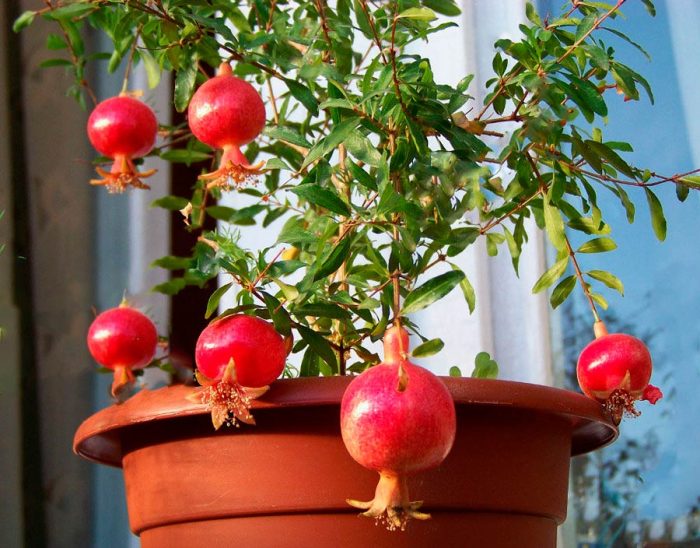
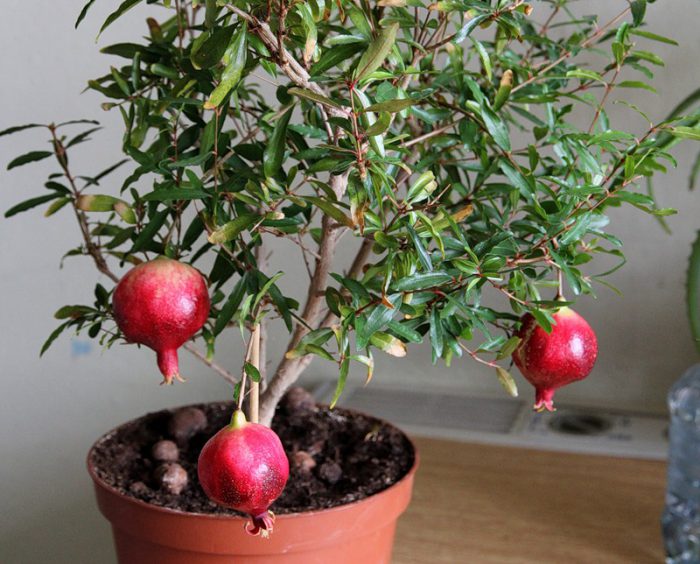
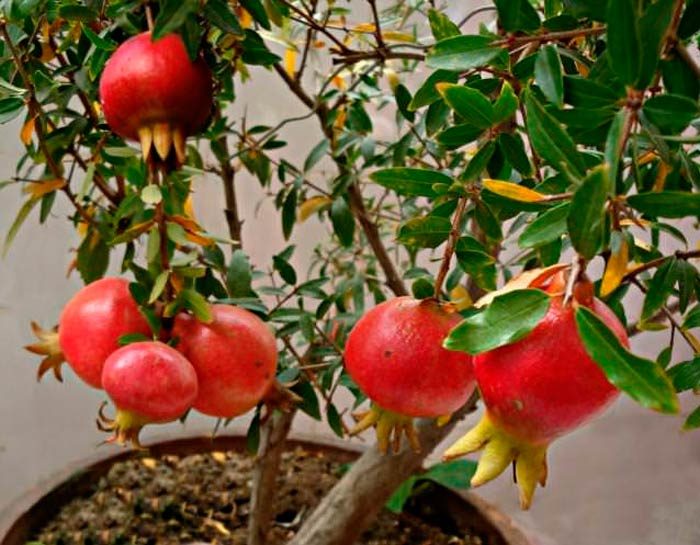
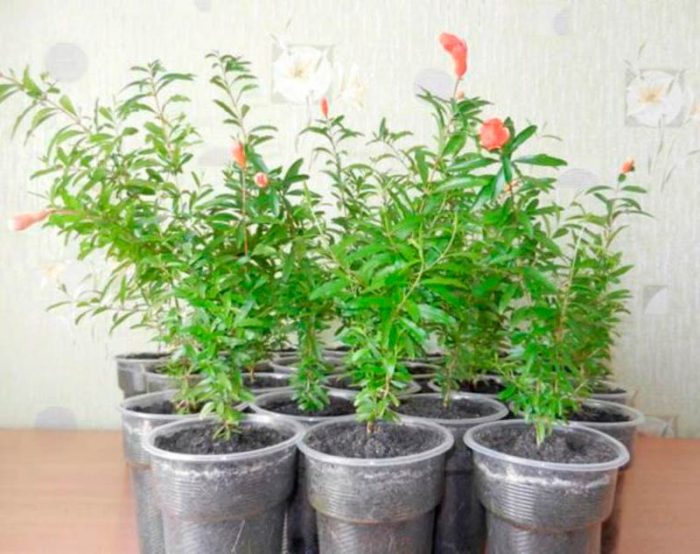
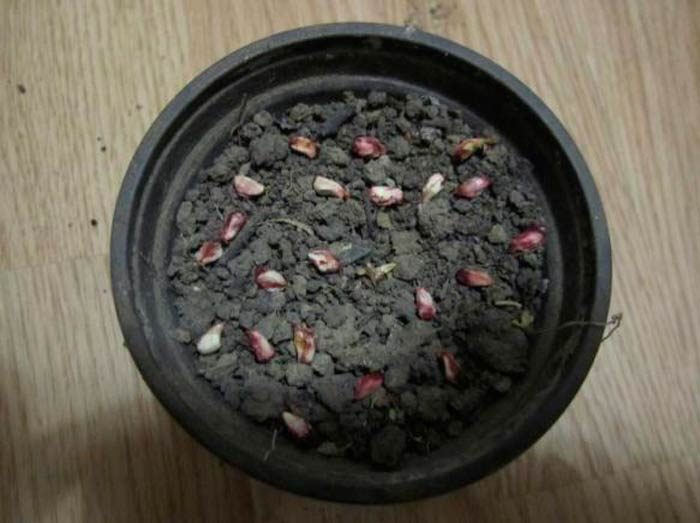
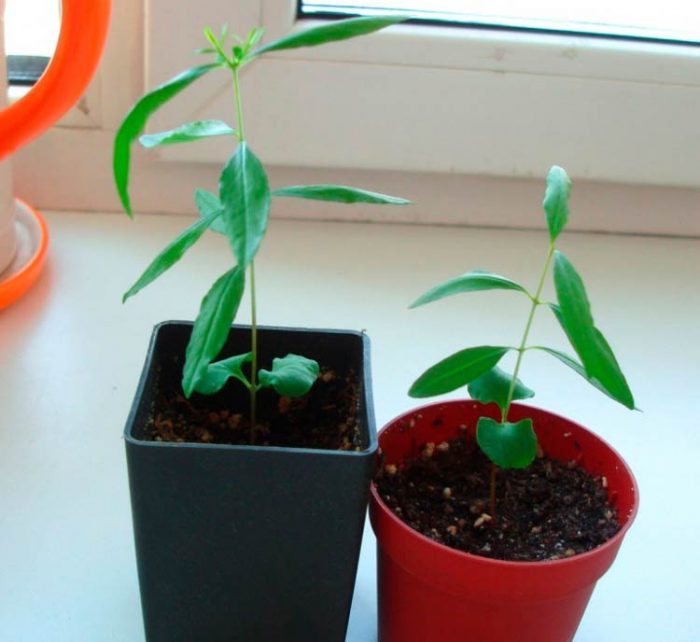
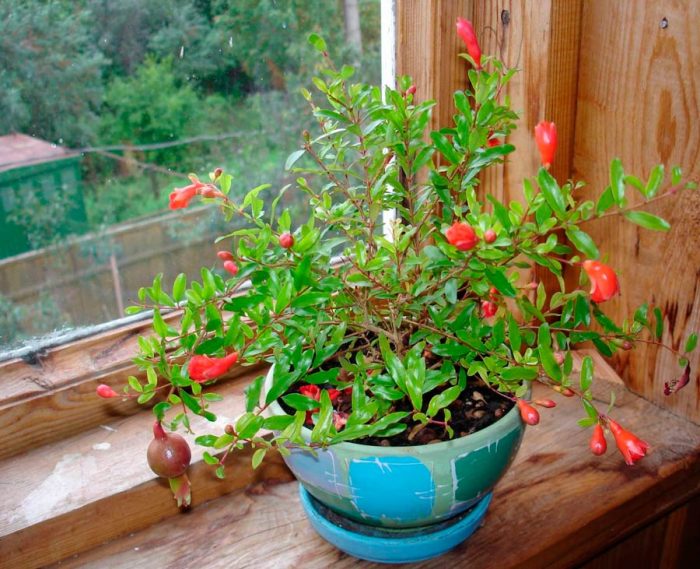

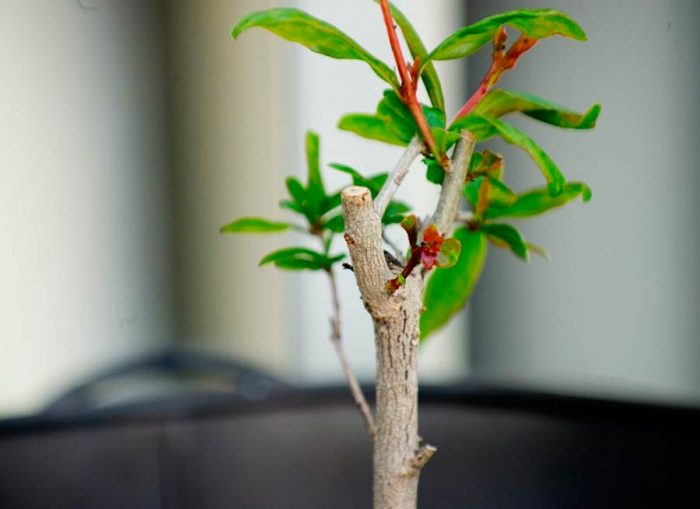
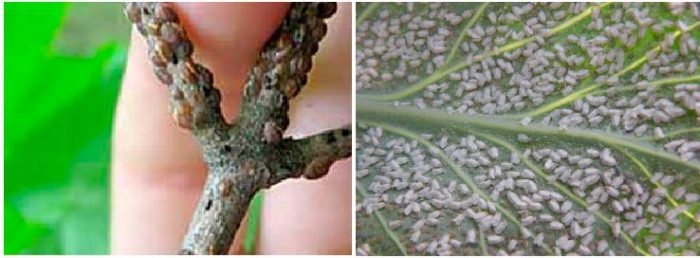
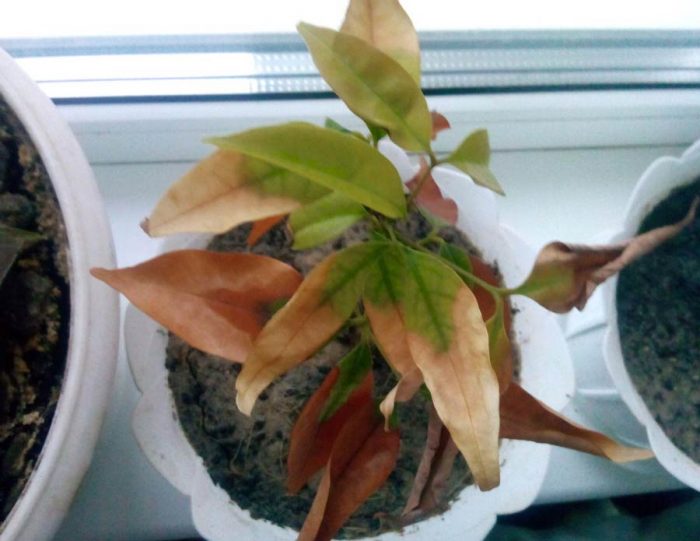
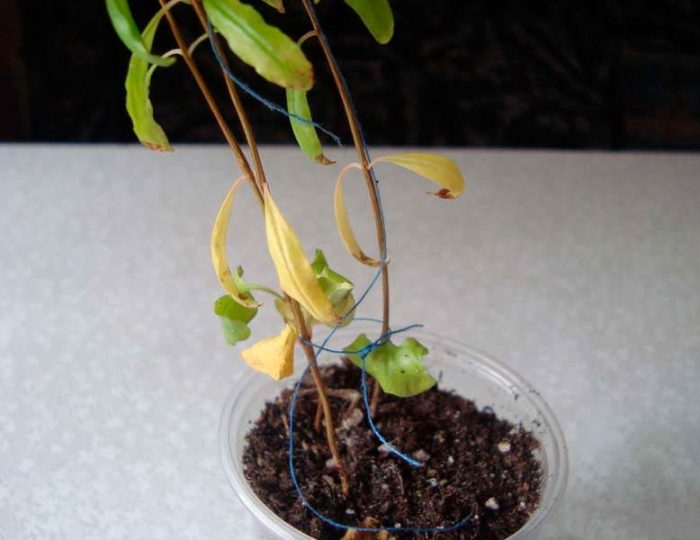
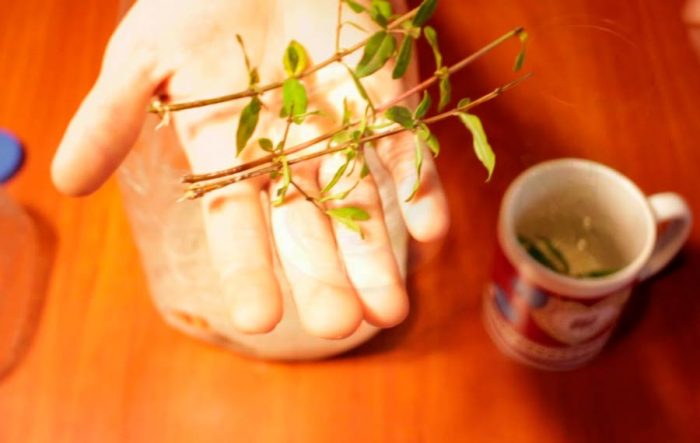
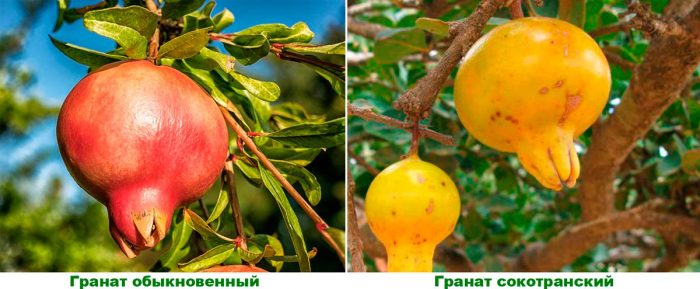
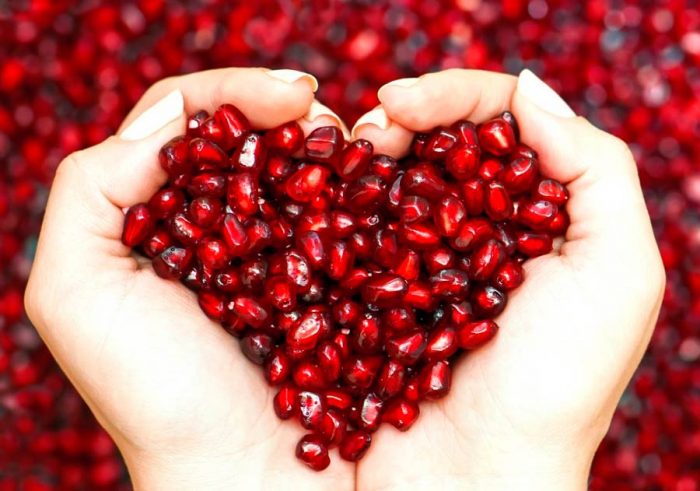
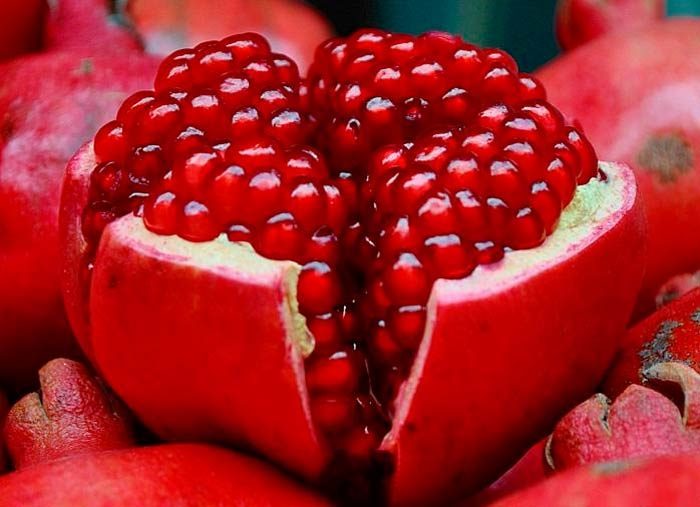










Thank! Interesting article. You need to try to plant a pomegranate from seeds.The indoor pomegranate looks very good. We managed to grow persimmon and maraki from seeds! It turned out to be very simple!
Hello! Thank you very much for such an exhaustive and comprehensive article! I regret only one thing - late she caught my eye. Can you please tell me if it is possible to correct my mistake? The fact is that the pomegranate was planted about a year ago, more precisely, already 14 months. But I somehow completely did not pay attention to such a moment as pruning and transplanting. That is, as it grows, so it grows, exclusively attaching importance only to watering, and thank God - as in your article. But now the result is this - it is very long (well, already about 0.5 m) and thin. And only three long thin twigs. I understand, now that it was necessary to form a tree, as you have written. But what to do now? Can any action be taken? Or is it all gone? Thank you very much in advance for your reply!
Hello Valery! Absolutely do not worry about growth and thinness) In principle, the nana pomegranate at home grows beautifully and without problems (unlike myrtle, which can simply “die out of nowhere”). It happens, in winter, will throw off the foliage. The main thing is not to dry it out. Now it makes no sense to cut. Better closer to April. Life cycle, "increase" in the intensity and duration of the sun. And fertilizers will already be possible. Anything "nitrogenous". As a person who has been practicing bonsai for many years and has had pomegranates for many years, I will say this - cut at the height where you want. You can divide the cut off by 10 cm and just put it in the water - it takes root easily. Especially with root and epin. "Stump" will go to two sides. On the kidneys. And then direct growth. And try not to "thicken". If it is "nano", then the maximum growth for a tree, the future, is 30-40cm. Look at a tree you like in nature, look at your own, especially in the future, in 5 years. Well, reduce the "natural" time by 15. From this, and dance. The pomegranate has a minus - the buds are opposite and almost 90 degrees. Therefore, it is a little difficult to "build" the crown. But if you cut 3 times a year, the internodes will be small, easier to guide.
The pomegranate looks beautiful in the interior, so I decided to plant it. Store seedlings did not take root. I read that they can be defective, so they can never grow up. I found the website of the Agronov brand, ordered a seedling there. It grows well, pleases the eye for a long time. Pay attention if you want a big healthy tree